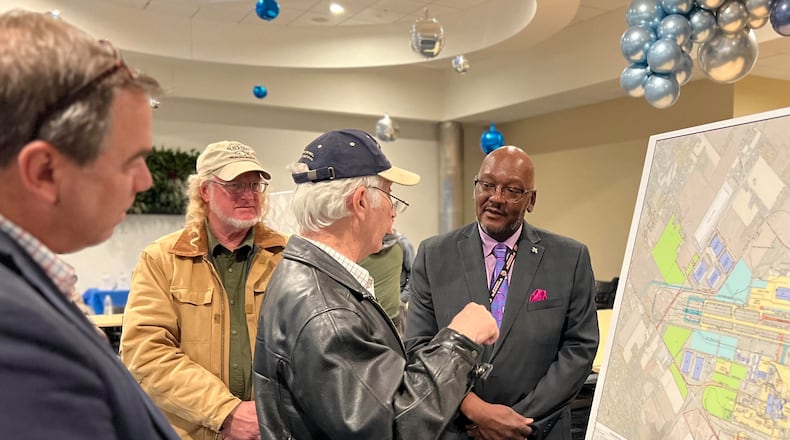Director of Aviation Gil Turner said the airport’s master plan is updated every 10 years, and takes a broad look into potential upgrades, improvements, reconfigurations, and expansions for the airport to consider.
Turner said these newly completed plans, which were drafted with the help of aviation consultant Passero, take into consideration updated FAA safety regulations. Turner noted that the master plan is not written in stone, and the inclusion of an upgrade project in the plan does not necessarily mean it will be completed.
The cost to complete all upgrade projects within the plans — which are proposed to be completed within three phases — would total around $407 million.
“There’s nothing really major that we’re proposing; (these plans) include some safety changes for the runways and taxiway configurations,” Turner said, adding that the new plans ensure proper distance between runways and eliminate some intersecting lanes.
When and if these changes are implemented, Turner said the average traveler likely won’t notice any major differences.
“We want to de-couple (two) runways and in order to do that, we would have to extend that runway to the north,” he said.
Air Service Manager Linda Hughes clarified that the north extension would total 1,450 feet and would be done in conjunction with the demolition of the same amount of runway to the south, ultimately resulting in a net zero extension.
In order to complete this reconfiguration as proposed, Lightner Road, on the border between Montgomery and Miami counties, would have to be closed or relocated, Turner said. He reiterated that this is a draft plan and prior to any such changes being made, the airport would have to work with the counties and other relevant jurisdictions on details.
FAA regulations regarding engineering design of runways and taxiways was updated in March of this year, according to the agency’s website. Hughes said DIA is not required to comply to the new regulations until some type of modification or construction takes place on the affected runway, taxiway, or ramp.
“Once the airport begins construction, the FAA will require compliance or grant a waiver,” she said.
Some community members attended the open house to see if the plans would affect Paul E. Knoop Jr. Prairie, which is located just southwest of the airport. Those opposing development on Knoop Prairie have said any projects would threaten a watershed that begins on the prairie land that feeds into Wiles Creek, which is a small stream that travels south through the Aullwood Audubon Farm and Aullwood Garden MetroPark.
Many have also said the prairie needs to be protected as it is a vital part of a thriving habitat for wildlife, birds and insects, and it has a diverse collection of native plant species.
In the previous 10-year master plan, a proposal to extend a runway in the southwest direction left part of the prairie within the “runway protection zone.” These plans were never carried out and within the new master plan’s runway reconfiguration, Knoop Prairie does not fall within the protection zone.
This change in plans left some residents hesitantly optimistic about the future of the prairie lands, while others, like Douglas Horvath, is reluctant to call it a win.
“Part of the runway protection is that it would have prevented anyone from putting a building on that land,” Horvath said. “So while it’s not in (the airport’s) current proposal to put a building there, there isn’t any restriction that would prevent development from happening.”
About the Author


